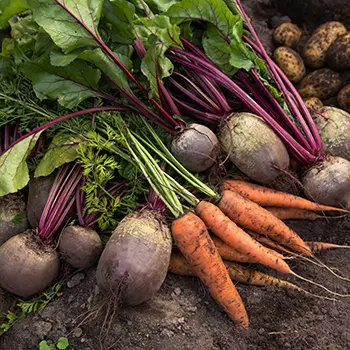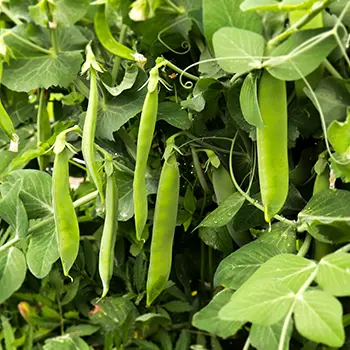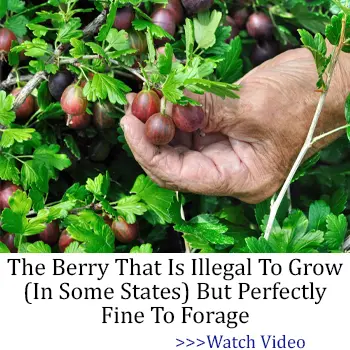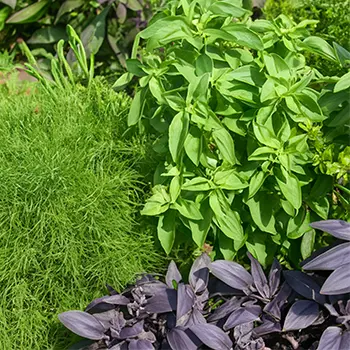It’s fun to have a million different plants and projects all year long. We’re the same way! Here’s the thing; depending on where you live, you may not have many options. Or you may have tons. Let’s get started and we’ll see what we can come up with!
The Colder Parts Of The USA
In this article, I’m splitting the USA into two parts; cold and not-quite-as-cold. Though the southerly region may hit some freezing days, it won’t be a snow and ice field like the northern area likely will pretty soon. Plus, there is a distinct difference in the amount of light each region gets.
I’ll pretend that you’re up north. Whether you’re in Maine, Michigan, or Washington State, this one applies to you! Anywhere above 40 N latitude is counted in this part of the article. I realize some of you may be close to that, so feel free to jump in anywhere in either of these categories.
Related: Raised Bed VS In-Ground Gardens
For the colder parts of the USA, you’ll be seeing winter much sooner than the rest of us. I’d strongly recommend that you stick to keeping any sensitive flowers or decorative plants indoors on your windowsill (or in a grow light area, goodness knows we’re all for grow lights around here!). Those freezes can come hard, and fast, and may actually sneak past the weatherman. The last thing I want is for your plants to get too chilly.
If you must grow outdoors, root vegetables and microgreens are easy and wonderful, fast-harvest plants that can be snipped off in the case of the microgreens a week or two after planting. Root vegetables, unless dealing with a very hard frost, usually will not have an issue with some chilly weather up top. Even if the tops of the vegetables seem like they’re having trouble, that tuber will keep on going.
The Warmer Parts Of The USA
Well, down yonder ’round these parts, I have a little more leeway for this kind of thing. Winter may or may not spring at all, depending on the year, and we usually get a good bit of notice when it’s coming.
For the warmer parts of the USA, I’d strongly recommend fall planting in containers and planting essentially anything that doesn’t need 8 solid hours of full sun exposure. That is, of course, unless you have a grow light or a lighting setup to help you out.
Related: DIY Survival Garden
The warmer part of the USA is much more flexible with this kind of thing. Ideal plants for this season are things like peas, beans, and other 30-to-50-day maturity plants. While greens are always great, watch for scorching if you’re in a far southerly part of the country. You may still be having some very warm days and you may still need shade netting regardless if it feels too “hot” to you, personally, or not.
UV is still very high in this area of the country during this time of the year. Don’t slack on shade for your sensitive plants (such as greens) just because it’s no longer 110 degrees outside.
Seeds For Everyone
Quick-grow herbs are one of my favorite things to plant during this time of the year. Why? Not only do we have the option of having freshly grown herbs for the many upcoming holidays, but they give you a brightness in your kitchen or living room that just doesn’t seem to come from any other plant. At least, that’s my opinion. These little plants seem to be very appreciative of your care and love, even when it comes to snipping them off and having them regrow.
Depending on what holidays you celebrate, many of the common American-type herbs are easily growable just under your kitchen lights or on a windowsill regardless of where you are or what time of the year it is. Herbs especially tolerant to indoor growing conditions are rosemary, basil, oregano, sage, and dill. Imagine a fresh pizza with summer tomato sauce and basil picked right from your kitchen window on a crisp fall evening. Perfection.
Related: Fall Container Vegetable Gardening
People might get out their pitchforks for this next recommendation, but I’m going to make it anyway. Miniature or dwarf sunflowers and zinnias are almost always in my kitchen window. They sow easily, they bloom readily, and they almost always seem just as happy to be there surrounded by their herb friends as the herbs do. If you want a burst of color here and there, put up a little box and add some of these easy-to-grow seeds.
The one caution I must add is that if you have a hard, hard freeze (blizzard conditions) and there is any seepage under your window, it may be time to move your flower planter closer to a warmer area of the house. These roots don’t like to be chilled and you are, after all, growing them out of season.
Related: Canning $5 Amish Stew
One last thing I’d recommend for everyone, indoors or out, is sprouts. Alfalfa sprouts are a wonderful, nutritious addition to your salads and something that seems to be falling by the wayside on a lot of gardening lists. They pop up in 1-2 weeks to usable heights and give your salad a bright crunch that you may be missing as a great number of greens seem to get a little mushy during this time of the year.
What To Avoid
We’ll be avoiding anything that has more than a 50-day grow time for usage. Remember, that’s almost the winter holiday season. While people are celebrating Winter Solstice, Christmas, and so many other holidays, you don’t want to be digging your garden out of the snow.
What would you like to see growing your garden this time of year? What would you avoid? Comment below with your thoughts, we’d love to hear from you. And remember, Happy Gardening; even as the year starts to wind down to a close!
You may also like:
10 Vegetables To Plant In Fall For Winter Harvest
Similar to Morphine: The Best Natural Painkiller that Grows in Your Backyard (Video)
How To Pickle Watermelon Rind The Amish Way










